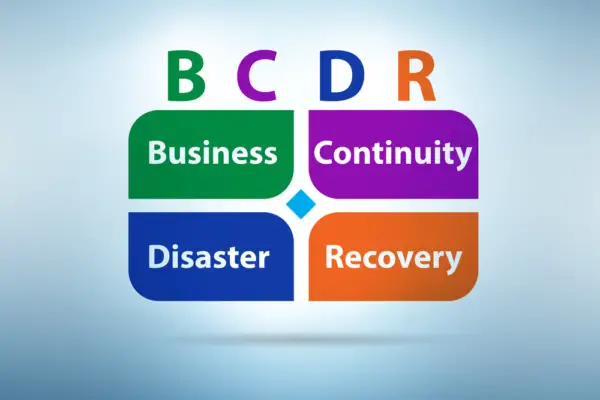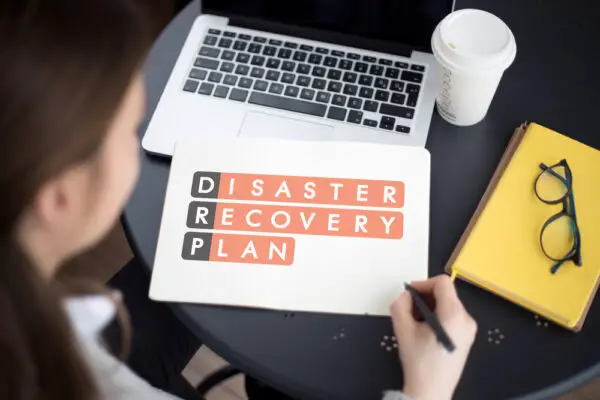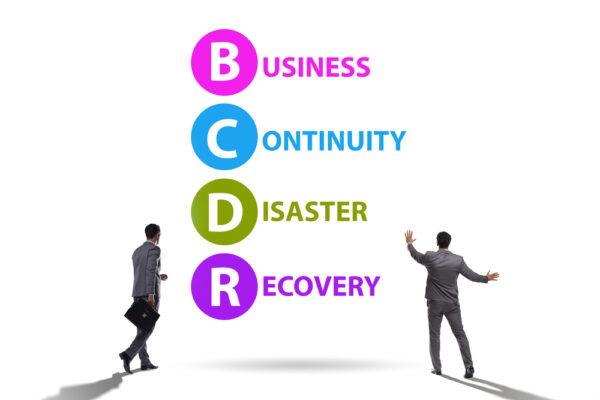A disaster recovery plan is a comprehensive document that helps an organization to respond to a disruptive event, such as natural disasters, cyber attacks, or power outages. It outlines procedures and protocols for restoring operations and recovering data. The plan also details the resources and personnel needed to facilitate the recovery efforts.
The plan should include strategies for mitigating the potential effects of a disaster, such as identifying critical systems and data, and developing backup and replication solutions for data storage and recovery.
A disaster recovery plan is an essential part of any business, big or small. It’s designed to help protect your organization from the potential fallout of a disaster. You should have a plan in place to help you recover from an unexpected incident that could otherwise threaten your operations.
In this article, we’ll discuss what a disaster recovery plan is, why it’s important, and how to create one for your business.

Why is a Disaster Recovery Plan Important?
Having a plan in place ensures businesses that they’re able to quickly and efficiently respond to a disaster, minimizing the potential for significant financial losses.
Having a disaster recovery plan is also important for ensuring the safety of employees and customers. A comprehensive plan can help a business to identify potential risks and put measures in place to mitigate them.
This includes things like ensuring that all staff are trained in emergency protocols, that Communication Plans are in place, and that the necessary resources are available to respond to a disaster.
Business can be better prepared to respond to any type of disaster.
What are the Key Components of a Disaster Recovery Plan?
These components include identifying potential risks, understanding the nature of the risks, and developing strategies to mitigate these risks.
Additionally, you should also develop an incident response plan that outlines the procedures to be followed in the event of a disaster. This plan should include instructions on how to handle the incident, how to communicate with stakeholders, and the methods to be used to restore services.
Other important elements of a disaster recovery plan include identifying the necessary resources and personnel needed to handle a disaster, establishing a backup plan for critical data and applications, and establishing a testing program to ensure the plan is up-to-date.
Additionally, you should also consider the impact of a disaster on your customers and develop a communication plan to keep them informed.
Key components of a disaster recovery plan include:
Risk Assessment and Business Impact Analysis (BIA): Understand the various risks that can impact your business operations and assess their potential effects. BIA helps you prioritize and determine which systems and processes must be recovered first.
Recovery Strategies: These define the specific steps your organization will take to recover from a disaster. They may include data backups, secondary operational sites, and utilization of cloud technologies.
Disaster Recovery Teams: Identify the individuals who will be responsible for carrying out the disaster recovery plan. Each team member should know their specific role and responsibilities.
Communication Plan: A plan for internal and external communication during a disaster. This includes notifying staff, clients, partners, and possibly public relations.
Data Backup and Restoration: A regular data backup strategy is crucial. Determine which data, applications, and services are critical to business operations and ensure they’re backed up in a secure and accessible location.
Test and Update the Plan: Regularly testing the disaster recovery plan helps you ensure it is effective and allows you to make necessary updates. These tests should be thorough and simulate a variety of potential disaster scenarios.
Vendor Management and Third-party Contacts: Keep a list of contact information for all crucial vendors and service providers.
Inventory of Resources: This includes hardware, software, and any other resources needed to run your operations. Having a clear understanding of what resources you have available can make recovery much smoother.
Training and Awareness: All staff should be aware of the disaster recovery plan and their specific responsibilities. Regular training sessions can help ensure everyone is prepared.
Post-disaster Review Process: After a disaster has been managed, review the performance of the DRP and update it based on lessons learned.
Remember that a DRP should be tailored to your organization’s specific needs and risks. It’s not a one-size-fits-all solution, and it should be reviewed and updated regularly to ensure it remains effective.
How to Create a Disaster Recovery Plan
Below are the steps you can take to create a disaster recovery plan:
1. Conduct a Business Impact Analysis (BIA): A BIA will help you understand the potential effects of a disaster on your business. It can help identify and prioritize critical business functions and systems that would need to be recovered after a disaster.
2. Identify Recovery Strategies: Once you’ve identified your key business functions and systems, you’ll need to develop strategies to recover these in the event of a disaster. This may involve data recovery, infrastructure recovery, and business process recovery strategies.
3. Develop your Disaster Recovery Plan: This involves putting together all the components identified into a structured document. The plan should outline the steps to take before, during, and after a disaster, and should include contact lists, clear roles and responsibilities, recovery strategies, and a communication plan.
4. Implement the Plan: Make sure the necessary systems are in place to support your recovery strategies. This could include offsite data backups, secondary operation sites, and cloud solutions. Make sure your employees are aware of the plan and their roles within it.
5. Test and Update the Plan: A disaster recovery plan is not a static document. You should periodically test the plan under simulated disaster conditions to ensure it works as intended and to identify any areas for improvement. Update the plan as needed based on the results of these tests, changes in your business operations or systems, and new potential disaster scenarios.
6. Train Staff: Regularly train staff on the disaster recovery plan and their specific roles. Make sure new employees are trained as well, and conduct refresher training as needed.
7. Review and Update Regularly: Regularly review and update the plan to make sure it aligns with any changes in your business operations or systems, and to reflect any new potential disaster scenarios.
The first step when creating a disaster recovery plan is to assess the risks to your business. This involves identifying threats like natural disasters, human error, and cyber-attacks.
Once any vulnerabilities have been identified, a strategy can be created to minimize or eliminate their potential impact. The next step is to create a plan of action for when disaster strikes.
This should include steps for alerting key personnel, assessing the situation, and responding to the incident. It should also detail how to restore systems and processes, as well as how to communicate with customers and stakeholders.
Finally, the plan should be tested regularly to ensure it’s up to date and effective.

Testing and Maintaining Your Disaster Recovery Plan
Testing your disaster recovery plan should be done at regular intervals, and any changes to the plan should be tested immediately.
To effectively test your plan, you must simulate the real-life scenarios that might occur during a disaster. This way, you can identify any weaknesses in the plan and make changes accordingly. It’s also important to simulate the process of restoring applications and processes, so you can ensure that the plan is able to get your business back up and running quickly.
Testing your disaster recovery plan should also include running regular backups. You should make sure these backups are stored securely offsite, and that they are able to be recovered successfully.
Additionally, all personnel should be trained on the plan, and tested to ensure they understand what to do and how to do it in the event of a disaster.

Conclusion
Take the time to create your own plan, so you can be prepared for any unexpected disasters or events. Make sure to test and maintain your plan regularly, so you can be sure it’ll be there when you need it.
With a good disaster recovery plan, you can rest assured that your business are safe and secure.

Chris Ekai is a Risk Management expert with over 10 years of experience in the field. He has a Master’s(MSc) degree in Risk Management from University of Portsmouth and is a CPA and Finance professional. He currently works as a Content Manager at Risk Publishing, writing about Enterprise Risk Management, Business Continuity Management and Project Management.

